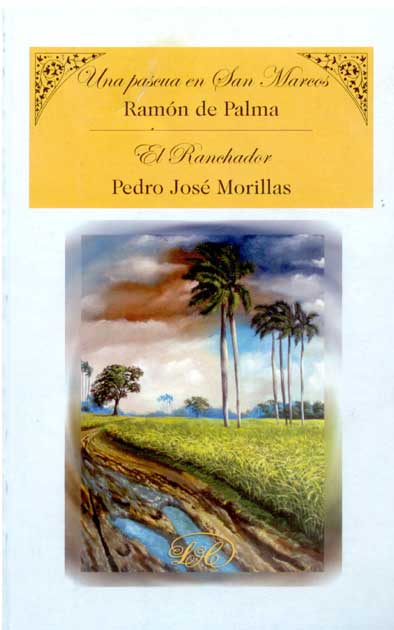2.3.6.2 The narrative of Pedro José Morillas (1803 – 1881), author of “El Ranchador”

“At last, I climbed painfully over those twists and turns, and from their heights I saw that deep in a ravine two dogs were tearing to pieces with their sharp fangs a wounded black man who could neither flee nor defend himself, and that three more of these unfortunates lay lifeless and stretched out in their still warm blood. The wounded man as soon as he saw me, implored my protection; but the dogs did not obey me nor let me approach. I regretted not having my pistols at hand: I ran to look for them; my horse had gotten loose, was grazing in the valley, and I lost a long time in catching it. I returned, throwing my soul into the aid of the victim, but I no longer heard its moans or the barking of the dogs… All lay in terrifying silence… I reached the summit again: the pale twilight of the afternoon, darkened further by the shadows of the forest and the mountains, represented a gloomy night at the bottom of the ravine, where without “I could perceive no object without a doubt if the red flame of a bonfire did not reveal to me that it was being fed by the corpses of four black people and some sticks and dry leaves that partly covered their torn limbs. The wind brought towards me the smoke, the smell and the screeching of human flesh being devoured by the fire, and I shuddered with horror… I turned my back indignantly on such a frightful scene, and immersed in very sad meditations, like the appearance of those asperities at the entrance of the night, I slowly withdrew, silently cursing the hateful destiny of my country.”
The cited paragraph concludes the text of “El Ranchador”, a work written in the late 1830s but not published until 1856. Its title alludes to the “profession” – exercised on one’s own initiative, at the request of individuals or collecting a salary from the government – of pursuing runaway slaves – that is, slaves who fled from the sugar mills and towns to enter the mountains and try to survive in the freedom of the palenques – and hunting them with the help of dogs, even if they could not capture them alive they had a license to kill them.
The ranchers were mostly peasants; in this case, it was a man whose family had perished due to the cruelty of a group of runaway slaves who attacked and burned his house; and he takes on an eternal revenge that multiplies the violence inflicted on his wife and children. The text apparently constitutes a “fictionalization” of the story of a certain Francisco Estévez, who dedicated himself to human hunting in the Vueltabajo region—who, in turn, inspired another very similar text by Cirilo Villaverde—who dictated his memoirs to one of his daughters.
The text begins with a romantic movement, but in the face of the harshness of the events, it suddenly takes on a more realistic tone. In this sense, it has been pointed out that it is the first story to address what would be considered a narrative of violence in Cuba. The author’s critical vision does not directly attack the rancher or the runaway slaves—two sides of the same dirty coin of slavery—but rather the institution of slavery and, in a broader sense, the effect of “chaos” that men established with their actions in the kingdom created by God.
Along these lines, the exergue used by the author is revealing: “When the laws written by the Divine hand in the book of nature are broken, the harmony of good is destroyed, and no other fruits are reaped than the curses of Heaven.”
This piece truly constitutes one of the first examples of pure narrative on the island. Beyond describing, commenting on, assessing, or criticizing the phenomenon of slavery, all these functions are implicit in the narrative, so that the author merely transcribes the facts, and they speak and denounce for themselves. An interesting parallel can even be established with what is required of cinematography, already on a visual level that could be reconstructed from the text of El Ranchador, although the descriptions always appear subordinated to narrative elements.
This text breaks with the idealizations of the time to show the bloodiest aspect of slavery in Cuba, which is why it can be considered one of those that most justly deserves the qualification of “abolitionist” since this was the only alternative to return to the order that slavery had broken – a motif of Greek classicism is reproduced here – following the same reasoning, there were many other “disorders” implanted by man – such as colonialism and capitalism – that remained to be abolished.








